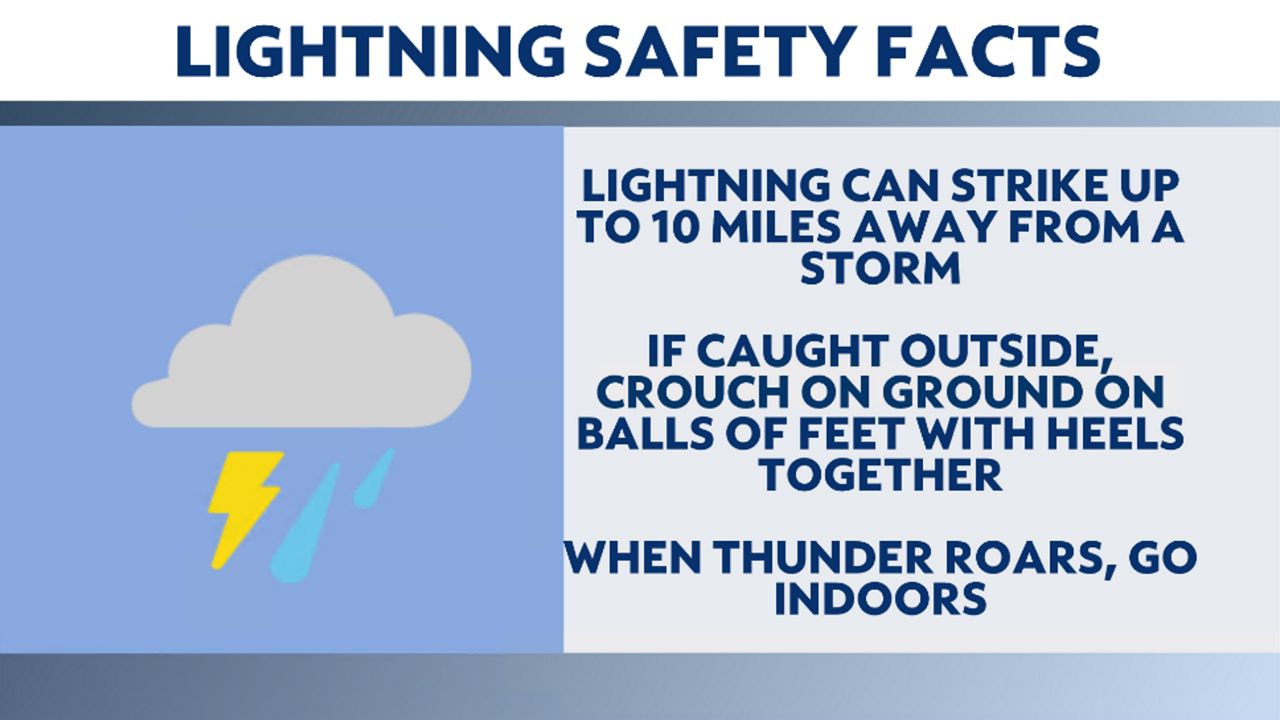Lightning is one of nature’s deadly phenomena. According to the Centers for Disease Control and Prevention (CDC), lightning kills, on average, 28 people per year in the United States.
Why is it so deadly and what can people do to stay safe?
Lightning is a powerful discharge of electricity. It forms because there are positive and negative charges within the cloud of a storm. When those charges are bounced around within the cloud and collide with one another, charges are built up.
If enough of the charge is built up, the energy is released, and this release is what we observe as lightning. The sound of the air expanding as lightning passes through it is thunder.
We’ve all heard the saying, “When thunder roars, go indoors,” to remind people to go inside during thunderstorms. But just because we hear thunder, does that mean the storm is close enough to affect us?
The short answer is yes, according to Mizzou Assistant Teaching Professor in Soil, Environmental and Atmospheric Sciences Eric Aldrich. “If you can hear thunder, you’re close enough to be struck.”
If you cannot go indoors, he says the safest thing you can do is make yourself small. “Lightning loves tall objects. Lightning is roughly 50,000 Fahrenheit (nearly five times hotter than the sun) and is no wider than the lead in your pencil.”

While key ingredients need to come together to generate a storm, conditions can occur during any month of the year. Aldrich says “The Show-Me State experiences its fair share of thunderstorms (usually between 30 to 40 thunderstorm days each year), contributing to lightning incidents.”
Adding, “Lightning likes to show off during the summer. So, if you’re looking for a light show, keep an eye on the skies from late spring to early fall - those are the months when thunderstorms tend to throw the most electrifying parties.”
Data from the CDC does not list Missouri as having a high number of lightning-related deaths per year. The states with the most include Florida, Texas, Colorado, North Carolina and Alabama with 73% of lightning deaths happening in summer.
Something interesting discovered in this data is that 80% of the people who died after being struck by lightning were male. The CDC also mentioned that more than half of the lightning strike victims were engaged in outside activities on the weekend.
You may have sunshine with clear skies in your location, but a storm located 10 miles away can still flash lightning in the sky over your location. “This phenomenon, known as ‘clear-air lightning’ or ‘bolt from the blue,’ occurs when a thunderstorm is far away, and its anvil-shaped top allows lightning to travel long distances.”
And while that can be scary, Aldrich says we see it more often during certain times of the year. “‘Clear day’ lightning is more common in the warmer months, typically during late spring and summer. These months create the ideal conditions for thunderstorm development, with warm air rising and colliding with cooler air.”
We may see even more thunderstorm days in the future. He adds, “As the climate warms, it enhances the conditions for thunderstorms, potentially leading to more lightning in Missouri. It’s like nature turning up the electricity in its summer storms playlist.”
Our team of meteorologists dives deep into the science of weather and breaks down timely weather data and information. To view more weather and climate stories, check out our weather blogs section.



